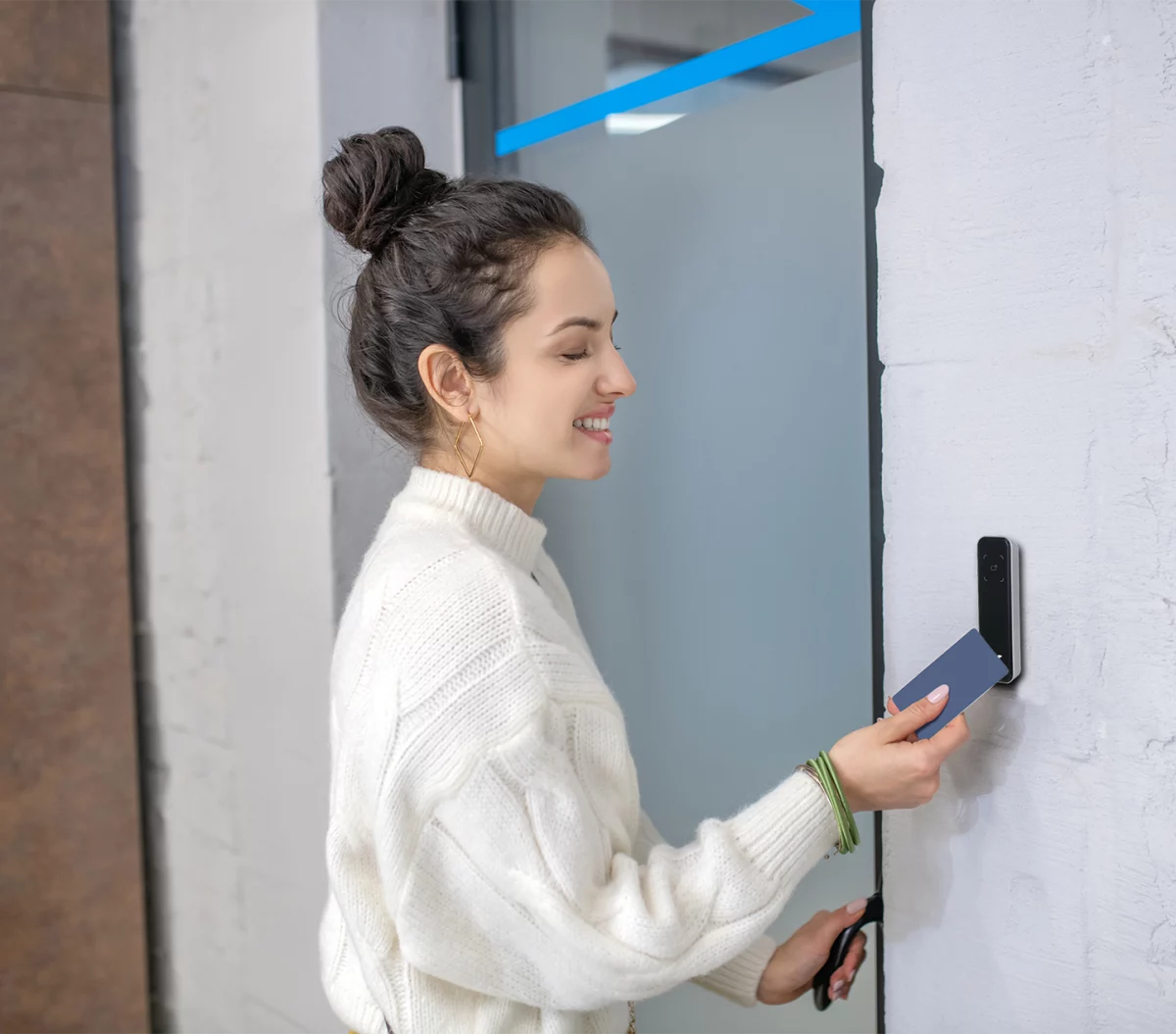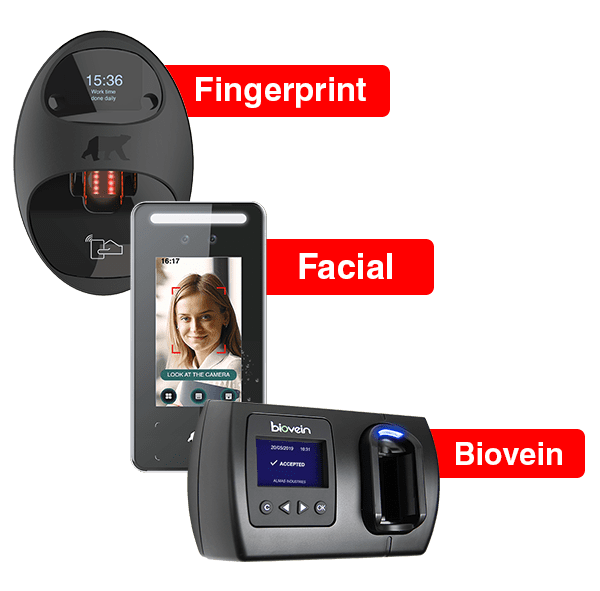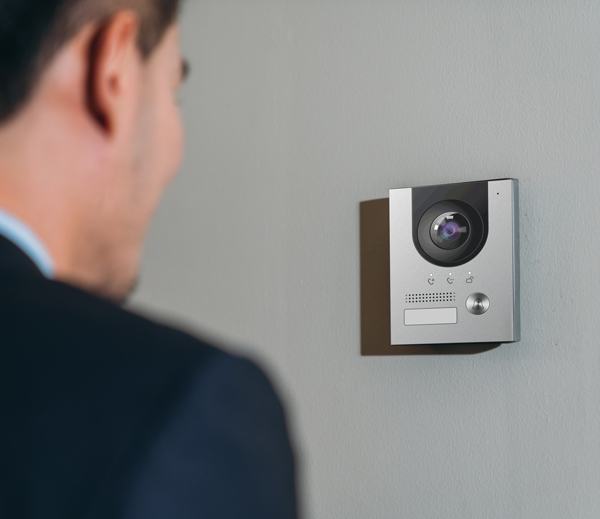
How Is Biometric Data Stored In Access Control Systems?
Fingerprint scanners, facial recognition readers, and biometric technology have become integral parts of our modern security infrastructure. They offer a robust means of identification, using unique biological traits that cannot be easily replicated or forgotten. This article delves into how biometric data is stored in access control systems, focusing on fingerprint scanners and facial recognition; exploring how they capture, store, and use this information to ensure security.
What is Biometric Authentication?
Simply defined, biometric authentication is the use of unique characteristics of a person’s body or behaviour to verify identity against an existing biometric template. It can be used to control access to technology, buildings or services. The types of characteristics that can be used for identification can be broadly categorised into physical characteristics including fingerprints, eye scans and face recognition, and behavioural characteristics including voice recognition, keystroke patterns and engagement patterns. Biometric identification systems work on either a recognition or authentication basis. Fingerprint authentication is the most popular method, although facial and voice recognition are becoming more common in certain sectors such as crime prevention and travel.
Biometric technology offers a very high level of detection and security. This is because a fingerprint, iris scan or voice cannot easily be duplicated or falsified. Using a biometric means of authentication is less time consuming, dependable (you can’t forget your finger), user friendly and requires almost no training. Biometrics can be used to automate processes such as recording employee hours, which are prone to falsification and error.
When it comes to fingerprints, skin falls into two types – smooth skin which covers most of the body and friction ridge skin. Friction ridge skin extends from the fingertips to the wrist and from the tips of the toes to the heel. Each area of friction ridge skin is unique to that person. So, fingerprints are undoubtedly and irrefutably unique to the individual. They are even unique to the finger, thumb or area of palm print of the person
Can You Fake It?
You may well ask, however, if it is possible to use the fingerprint of someone who is deceased, create a false face or imitate someone’s voice. The simple answer should be no, because modern biometric scanners have liveness detection built into them. Liveness detection is any technique used to detect a spoof attempt by determining whether the source of a biometric sample is a live human being or a fake representation. This is accomplished through algorithms that analyse data collected from biometric sensors to determine whether the source is live or reproduced. Do all cheaper biometric readers work on this basis? No, and is there a possibility that a very determined hacker could circumvent the liveness detection? Yes, but the technology is far more difficult to find away around than a pin code or simple lock and key. For most commercial environments, it’s giving you the right level of security and control.
Interestingly, a deceased person’s fingerprint would be unlikely to work on a quality reader after a short period of time, because the lack of blood flow would change the minutiae, particularly the ridges.
Consistently improving algorithms effectively thwart these attempts, analysing the data to detect whether the source is live or reproduced. This technology adds an extra layer of security, ensuring that false authentication is significantly reduced.
Capturing Biometric Fingerprint Data and Analysis
When it comes to biometric fingerprint technology, the first stage is the capture of an individual’s fingerprint. Unlike a password, a fingerprint is unique to a person and cannot be amended or forgotten. Once a piece of biometric data is captured, it is analysed and converted into a biometric template. This is a binary mathematical representation of the original fingerprint, based on the analysis of the minutiae – usually the endings and bifurcations of ridges within the fingerprint. One essential aspect of this process is that the resulting template cannot be reverse engineered into a picture of a fingerprint. This ensures that the original fingerprint remains secure and private.
It should be noted that not all fingerprint scanners employ this method of registration, inferior models may indeed, just capture an image of a fingerprint. This is not as secure as those systems which convert the print into a binary code by applying an algorithm.
Facial Recognition Data
Facial recognition is another powerful form of biometric authentication that is gaining traction in various applications. Like fingerprint scanners, facial recognition systems capture and process unique facial features. The data is stored and used in much the same way as fingerprint data, providing a secure and convenient means of authentication.
Its emergence as a vital authentication tool showcases the continuous innovation in biometric technology, helping enhance security across multiple platforms.
Understanding how biometric data is captured, stored, and utilised is crucial in an era where security breaches are all too common. The sophistication of fingerprint scanners and facial recognition technology provides robust protection, ensuring that our personal information remains safe. Systems such as Almas’ Optima ID showcase the advanced capabilities of modern biometric technology, aligning privacy, convenience, and security in a seamless manner.
Storing Biometric Data
Biometric data can be stored in various ways, each with its advantages and potential risks. A hardware-based recognition system offers a fast response during user authentication, as biometric templates are stored locally on a specific piece of hardware. On-device storage, common on smartphones with touch ID fingerprint sensors, keeps data separately from the device’s network. Biometric servers allow for multi-location verification but are more susceptible to cyber-attacks. Therefore, encryption is vital when transferring data over the network.
A hardware-based recognition system is where the data is stored on a specific piece of hardware and works with the device to recognise the data, without storing the data on the device itself. This offers a fast response during user authentication as the biometric templates are stored locally and the recognition system does not require any external response.
A portable token system uses a fob or a smart card to store biometric data. This means that your fingerprint, once captured, is stored within the token. The benefits of storing biometric data on a portable token is that it doesn’t need to be transferred over a network for verification purposes, and so this reduces the risks that can come with network-related vulnerabilities. When using this method, the user will need to present their card or fob and then their biometric data as a two-step authentication process.
Biometric data can also be stored on an end-user’s device. This is most common on smartphones that use touch ID fingerprint sensors, such as Apple’s iPhone. On-device storage can be used to store biometric data through a chip that holds the data separately to the device’s network. Many of the new biometric bank cards which have been trialled in the last few years work using this system. When storing the data on the authentication device itself, the organisation implementing the biometric verification process doesn’t have control over it.
A biometric server is another way to store data, although it is more susceptible to cyber-attack. As data is held on an external server it allows for multi-location verification. To reduce the risk of data being breached, it must be encrypted when being transferred over the network. The issue with encryption is deciding where encryption keys will be stored and who will be trusted with access. With the implementation of GDPR, there are increased responsibilities of managing and storing data with the potential for penalties should the data become compromised. One major flaw with this method is that should a hack take place, all of the user’s biometric data could be leaked at once. This happened to Equifax, British Airways and Uber.
Distributed data storage is a further method which stores the biometric templates on a server and a device. By storing the data this way, it makes it harder for a cybercriminal to access the data, as they would need to get into both points. This method offers security and privacy without sacrificing usability or scalability. However, it is really only suitable for companies looking to maintain complete control over the data and willing to accept the risks and liabilities associated with storing end users’ biometric data themselves.
Ask The Experts
At Almas, we take security very seriously. We design, test, and build our own biometric fingerprint scanners to be the best quality in the market. Our biometric templates are stored in a binary format and encrypted within a database. Our system effectively has three levels of security, preventing fingerprint data from being accessed by anything other than the biometric reader for the purposes of verification.
Furthermore, our commitment to privacy and security is unwavering, and we continually strive to provide solutions that are at the forefront of biometric technology.
If you’re interested in leveraging the power of biometric technology within your business, contact us today for a consultation. We will advise you every step of the way, including ensuring that you are GDPR compliant. Our dedication to safeguarding your security is our top priority.

FIND OUT MORE ABOUT OUR BIOMETRIC ACCESS CONTROL



